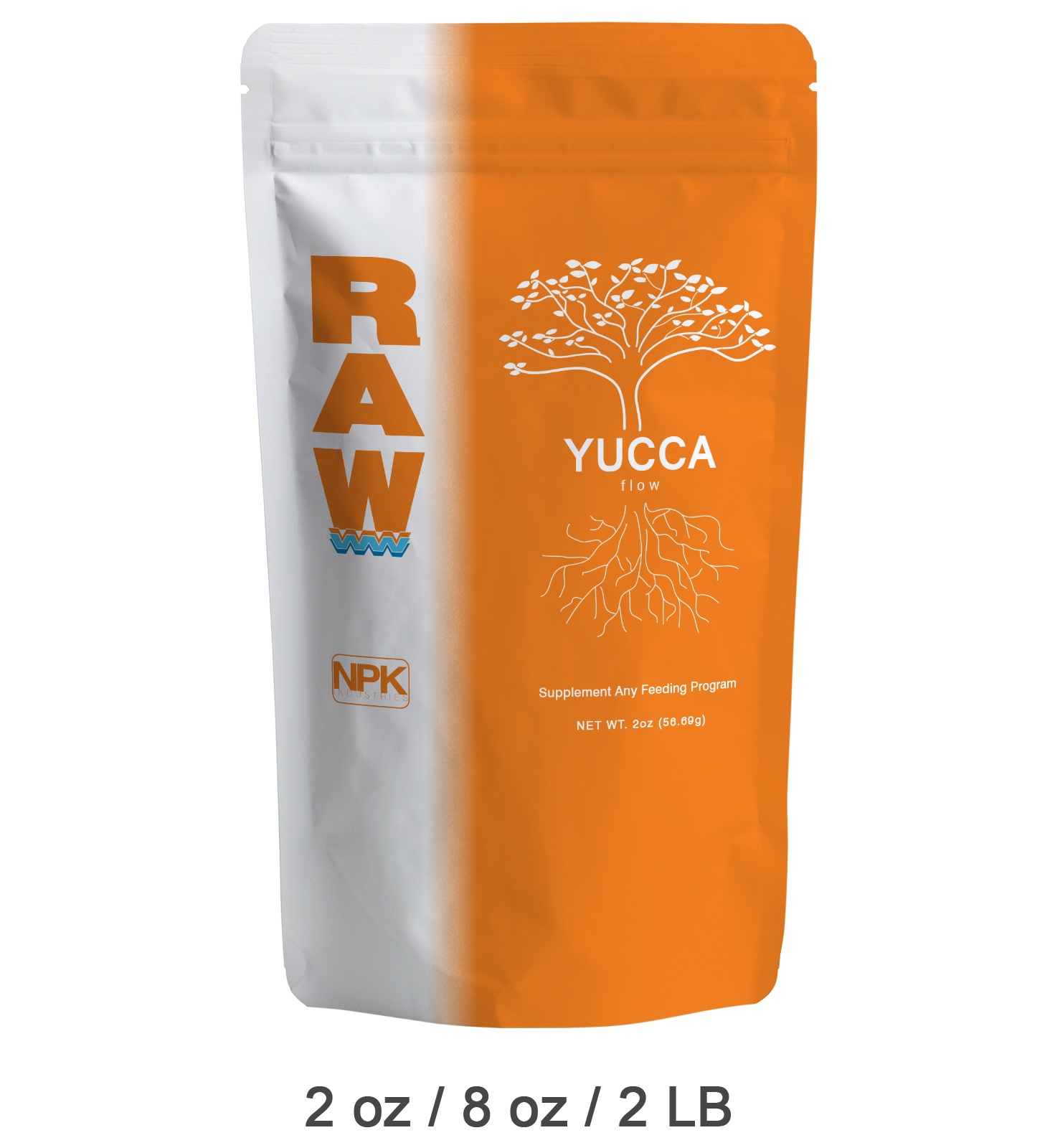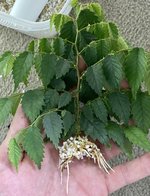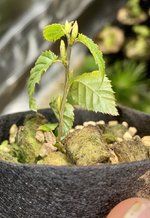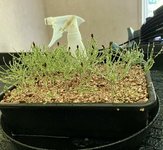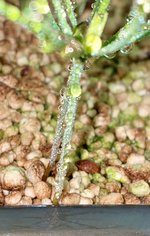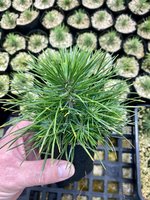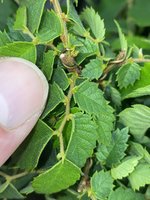Good ole’ lower nitrogen fertizer about 1/4 strength or .4-.6 ec
Use fulvic acid powder/kelp powder in a 5:2 ratio with 1/64 tsp yucca powder per gallon water and foliar feed
ONCE A WEEK ONLY.
The cytokonins in kelp break the auxin signal in the meristem of the plant and forces the genetic survival responce of back budding/branch break responce in trees( most trees act favorably especially ones that bud normally in this way).T
makes leaves photosynthsize more and great motherplant prep for cuttings.
It will slow elongation and keep internodes short.....look at my results on Zelkova,Hornbeam,JBP.
Back udding on 1” branches and seedlings.
Look at the 1st zelkova seedling air-layer...only
6” tall!!!
For BULK sizes go to our Professional Division. Use RAW Full Up in conjunction with all nutrients and supplements. It is a beneficial supplement to all feeding schedules. Its also ideal for adding to foliar sprays and for creating optimal recipe solutions. Works in conjunction with all nutrient...

npk-industries.com
For BULK sizes go to our Professional Division. RAW Kelp is 99% kelp extract from seaweed (Ascophyllum Nodosum). This product is fully water soluble. RAW Kelp is a beneficial supplement to all feeding schedules. It is also ideal for adding to foliar sprays and for creating optimal recipe...

npk-industries.com
For BULK sizes go to our Professional Division. RAW Yucca is made from 100% natural yucca extract from the plant Yucca Schidigera. It can be used as wetting agent for nutrient solutions and foliar sprays and is great for flushing excess salts from the root Zone. When used on soils, it helps...

npk-industries.com



